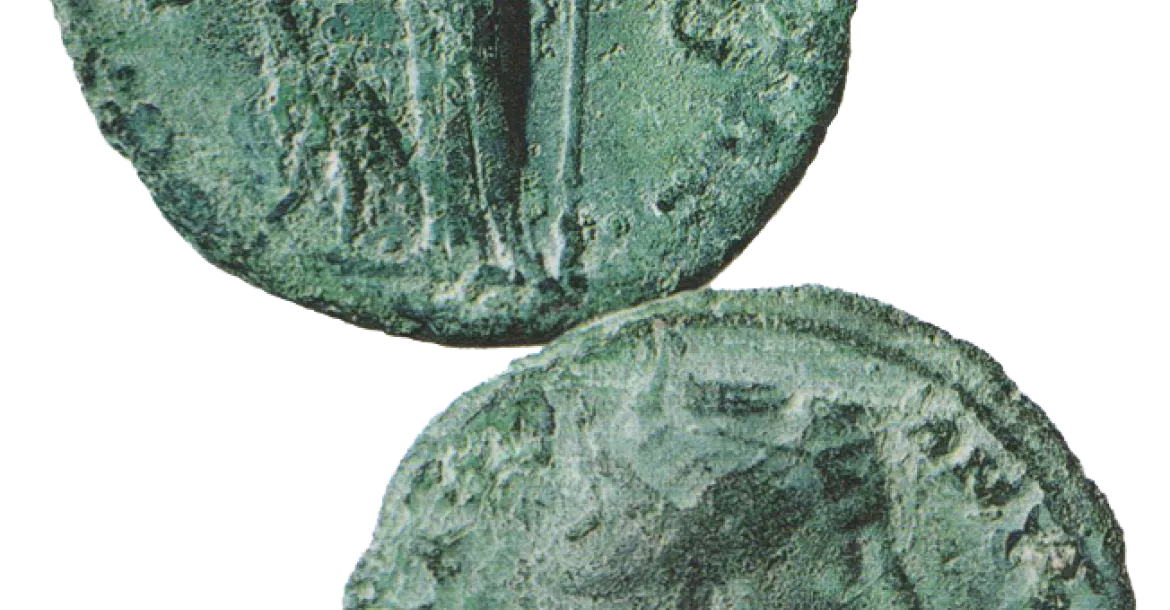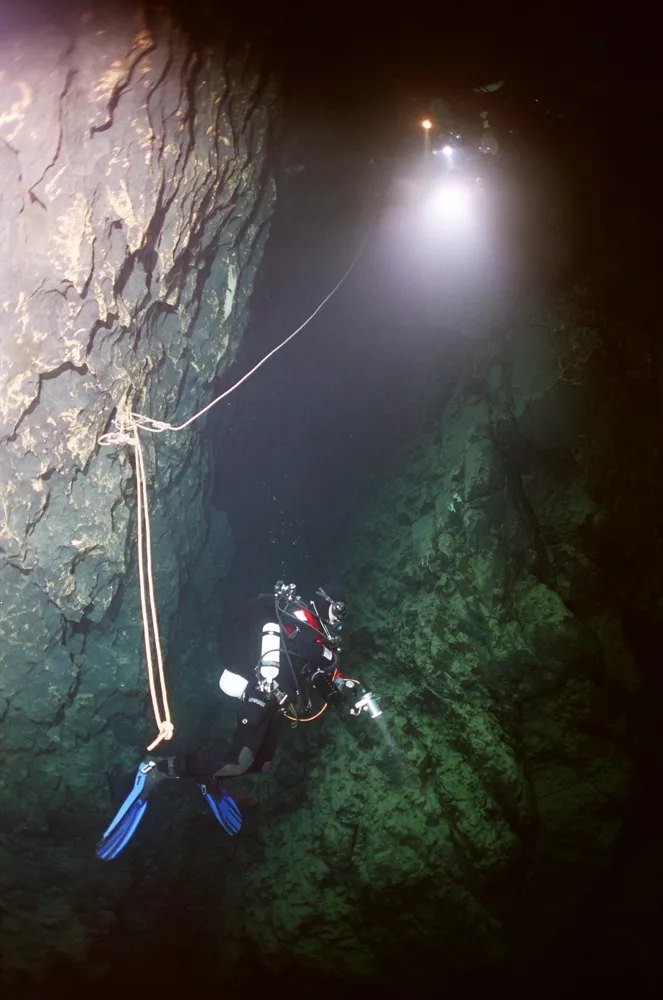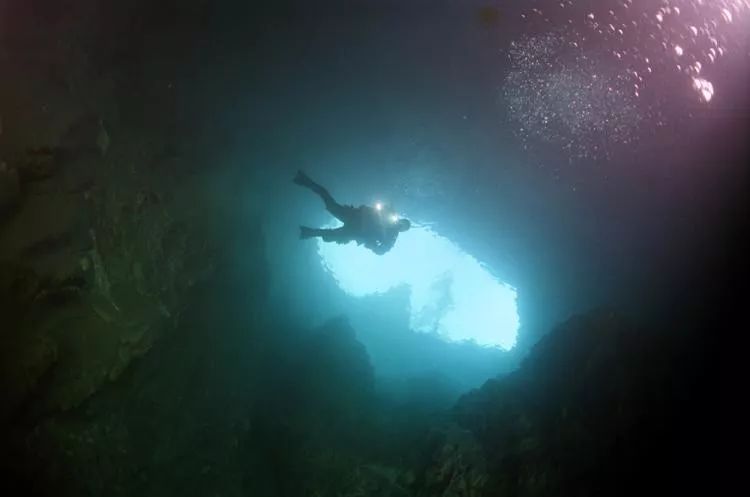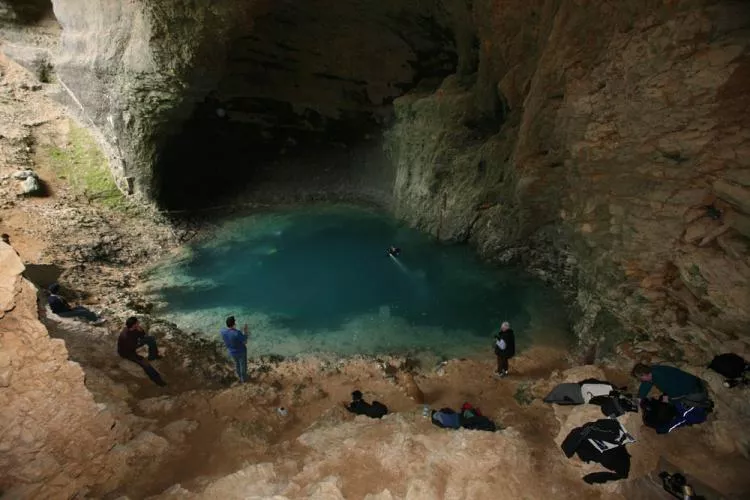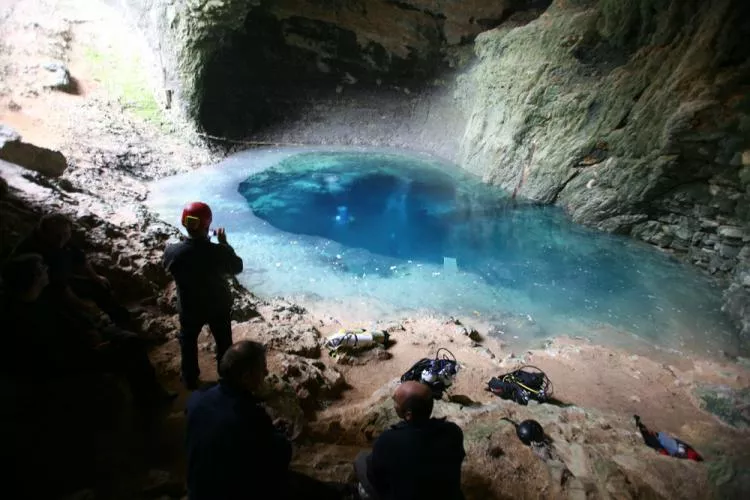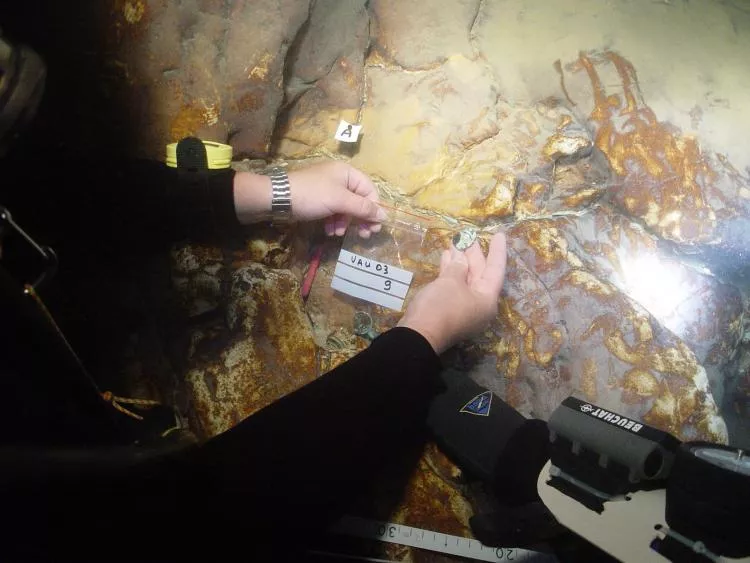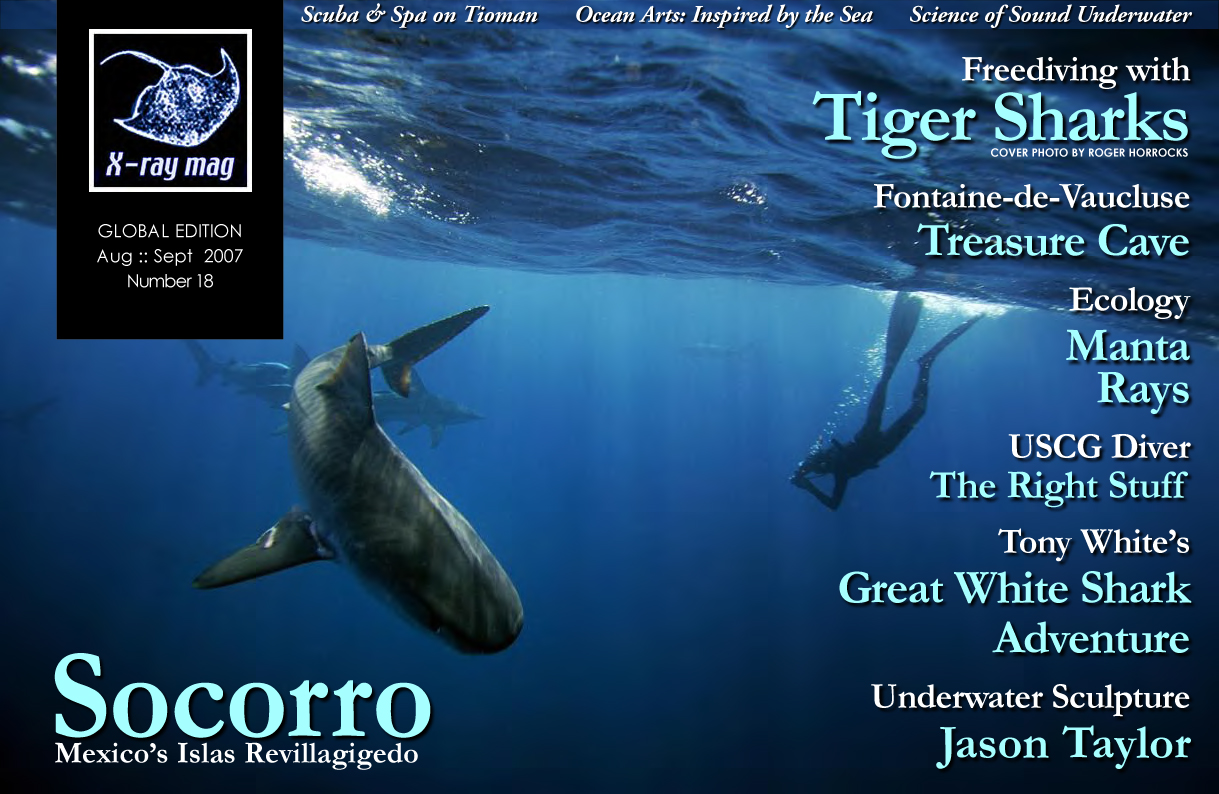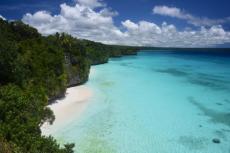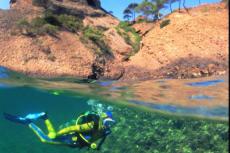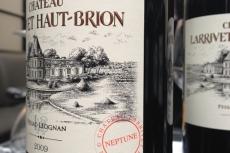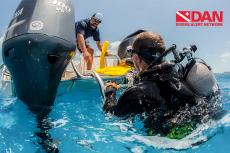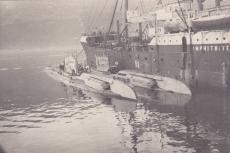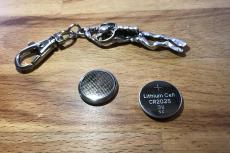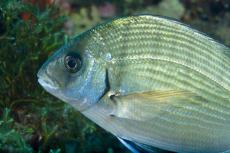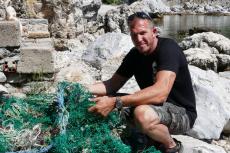This amazing tale begins with the selection of a group of divers who were asked to participate in a technically complex dive expedition to explore one of the deepest caves in Europe. Soon enough, we, the divers, found ourselves in a frenzy of activity and planning. There were so many preparations to make and things to consider—equipment for deep water photography, CNS and OUT values, which gas blends to use, how to put together a support team, management of the group and the quantity and size of the biggest cylinders and what not. But one can only plan for so much, then fate, as it would turn out, ended up giving us a surprising adventure for which no technical dive planning could have prepared us.
Contributed by
This amazing tale begins with the selection of a group of divers who were asked to participate in a technically complex dive expedition—to explore one of the deepest caves in Europe. Soon enough, we, the divers, found ourselves in a frenzy of activity and planning.
There were so many preparations to make and things to consider—equipment for deep water photography, CNS and OUT values, which gas blends to use, how to put together a support team, management of the group and the quantity and size of the biggest cylinders and what not. But one can only plan for so much, then fate, as it would turn out, ended up giving us a surprising adventure for which no technical dive planning could have prepared us.
A jump on an Air France jet saw us off to Paris. Here, the more modest blue Fiat of our French patron, Joel Enndewell, almost squatting under the load of a roof of cylinders and weighy equipment, somehow managed to slalom itself out through the insanely busy Parisian traffic and onto the A6 heading out towards Lyon.
To avoid congestion, we took the scenic route steering clear of any bigger cities. The tranquil French countryside was full of aromatic smells from the forests and fields we passed, as we journeyed through the landscape of wine and cheese.
Wonderful places.
Our destination was the village of Chateauneuf du Pape, a city—famous for the making of the Pope’s wine over the centuries—that lies very close to the deepest underwater cave in Europe, the Fontaine-de-Vaucluse.
Diving in the cave is very prohibited. Both the city council and the county have imposed a prohibition of diving into the cave. It is so strict that trespassers will surely be thrown in the slammer. What is the reason behind all these strict measures? Well, we heard that, basically, the French divers wanted the place to themselves and keep foreign divers out. Grilling one of our hosts, Yves Billaud, on the issue he looked at us with astonishment and gave us a mischievous smile.
Yves is one of France’s most famous cave divers—it is what he does for a living. He is an acknowledged scientist and expert from DRASSM (Departement de recherches archeologiques subaquatiques et sous-marines-Annecy), which searches for underwater historical artefacts in karstic areas of the country.
“There are two versions of the answer to your question,” was his enigmactic reply. “There is the official version and an un-official one. Which one do you want to hear?” he asked while pouring the first aperitif of the evening. “Is it possible to hear both versions?” we wanted to know.
“Well, as every secret some time becomes obvious, I will explain everything,” he said. Yves explained: “The official explanation behind the ban on diving into Vaucluse is that drinking water is drawn from the cave river, and they want to preserve the purity of the water. But the real reason behind the prohibition of diving into Vaucluse has something to do with a centuries-old secret…”
Vaucluse was a place of worship for Gallic tribes who lived here during antiquity, more than two thousand years ago, when Provence was a Roman province. Astonishing evidence came to light, when in 2001, two divers—Roland Pastor and Tomas Soulard—from the speleological society Societe Speleologique De Fontaine de Vaucluse (S.S.F.V.), dived into Vaucluse and at the depth of just 22 meters and had their attention drawn to some flickering reflections on the cave walls.
There was a boat wreck down there—the D’Ottonelli, and once they moved closer, the divers realized that all those small green spots reflecting the light from their lamps were hundreds of coins lying in the cracks of the wall. “We immediately realized that we had made a significant discovery,” Roland Pastor later explained.
“There is something in a treasure that fastens upon a man’s mind. He will pray and blaspheme and still preserve, and will curse the day he heard of it, and will let last hours come upon him unawares, still believing that he missed it only by a foot. He will see it every time he closes eyes. He will never forget it until he is dead and there is no way of getting away from a treasure once it fastens itself upon yours mind.” — Joseph Conrad
Historical information
The first dive into Vaucluse was done by Nello Ottonelli at 1878. The diver wearing the heavy hard hat diving equipment of the day reached the depth of 23 meters. Then a small diving boat that was providing the surface tendering also wrecked in the lake in the cave. The small vessel came to rest on the bottom at 24 meters becoming an unique shipwreck and the oldest cave wreck in the world.
In antiquity, it was a commonplace ritual to throw coins into lakes and rivers as an offering to the gods. It is a tradition that still lives on to this day—just think of the many fountains in cities around the planet in which people throw coins.
Caves were places of special worship for the ancient Gauls. In the ancient cultures caves were often considered the abodes of invisible mighty divine entities. It is likely that the high waters and filling of reservoirs were perceived as act of gods.
In August 2002 and 2003, the first underwater excavations took place in the cave under the direction of underwater archeologist, Yves Billaud, and under the auspieces of DRASSM in support of the regional archeological service, the PACA region and city council of Fontaine-de-Vaucluse. The expeditions, which took place during these two seasons, brought to light 1624 coins, iron nails, bronze bracelets and antique hairpins for a dress.
Most of the coins were found in cracks of the vertical cave wall at a depth of 25 meters. It was quite straight forward just to collect them from the cracks and crevices in which they were lodged, number and pack them.
A subsequent analysis showed, that, despite poorly mineralized water, only 40 percent of coins were in a good state of preservation. Paul-Andre Becombes, an expert on Roman coins, dated the oldest of them to 70-30 B.C., and youngest to the fifth century AD. These findings have provided very valuable information on the periods when there was worship at the cave, the migration of populations and the circulation of coins in the Roman Empire.
A part of the coins obviously had cult value, not monetary, meaning that they had been produced not with trade in mind, but especially as gifts to the gods. Portraits of emperors, images of military fights and scenes of hunting on the back side of the coins have made it possible, with a fair deal of certainty, to tie them to specific historical events.
The gold coins from the third and fourth centuries AD shows that Fontaine-de-Vaucluse in this period was visited by the elite of the society who came here to offer gifts to the gods. By the same token, the abundance of the much less valuable bronze coins show that also the poorer inhabitants of the province paid visits to the cave for long periods. It is surprising, however, that no coins from the Middle Ages have been found, indicating that the interest in this wonderful cave suddenly evaporated, to be forgotten for many long centuries.
Yves’ story-telling captivated us. It completely made us forget all about diving and the often mindless technical discussions surrounding the dives. We were struck by the sobering realization that this cave was really an historical monument with ancient artifacts, and that this was why the French ministry of culture did not want uncontrolled amateur diving there. We began to appreciate how valuable and rare our special permit to dive this cave really was.
The treasure cave
The cave Fontaine-de-Vaucluse is located close to the town of the same name. On the central square, a roman column stands, and as we head for the cave by foot, we pass the café, The Petrarca and Laura, where we held several briefings and debriefings. At the time of our visit, we found the idyllic provincial landscape draped in autumn colours, with fallen leaves blowing around the trunks of the trees contrasted by the deep green colour of the stream coming out of the ground. It is an intimate place for romantic couples, while on a noisy Sunday, there can be tourists picnicking on the bank.
More than a million tourists visit Vaucluse each year, but only the rare cave diver can venture down into this secluded place. For this reason, we were met with rather surprised expression from the other visitors when we were hauling cylinders and heavy equipment uphill to the site on an early Sunday morning.
The entrance to the cave is a huge grotto in which there is a small, approximately 25-meter wide, lake. It is precisely this lake that attracts tourists here. For centuries, its deceptively still oval surface has beckoned visitors to take a cool dip on a hot day.
On a rainy autumn day when the muddy stream can discharge a powerful 22 cubic meters of water per second, it is a little less enticing. In spring, it turns into a roaring waterfall drawing admiring spectators from afar. Among geologists across the globe, vaucluse has now become a term for a large karstic source with big variations in water discharge.
The Fontaine-de-Vaucluse represents an output of the huge underground river collecting water from a watershed approximately 1100 square kilometers in size between the hills of Ventoux and Lure in the north and the Vaucluse Mountains to the south. The huge limestone pit was considered bottomless for a long time, because no diver had ever measured its depth until recently.
The brave divers who had dove here, told, that they literally felt like falling into a black infinite void inside of the cave. It was only in August 1989, that an ROV (a remotely operated vehicle), the Spelenaute, operated via a cable from surface, finally landed on the sandy bottom of the Fountain-de-Vaucluse at a depth of 308 meters.
The expedition
We were a mixed group of Swiss-Russian-French lucky beggars who together with the teams from the speleological society of the Fountain-de- Vaucluse (S.S.F.V.) started preparing our first dive at the cave. Roland Pastor gave the last instructions: “The top part of the cave is full of loose boulders which have fallen down during recent tectonic movements.
Some of these, which weigh several tons, appear to have come to rest in unstable positions. Be very careful around these. If you touch them, you might cause a rock to tumble down—and if worse comes to worst—the rock will take divers and coins with it in the fall.”
All this being said, we were lucky. The conditions were excellent, with crystal clear water. It was imperative, however, that we didn’t touch the walls that were covered by a limey layer of particles that could be easily kicked up by a careless fin stroke clouding the visibility.
The head of S.S.F.V club wished us good luck as he saw us off. With all our rebreathers, cylinders, heavy photo equipment and other technical complexities to bear, we needed luck, too, as we decended into the netherworld in search of more treasures in Vaucluse.
In the cave, the water clarity is so good, that one can see the trees growing in the hills outside the cave from underwater. At the entrance, the walls are cracked, there is a stone talus at the bottom, and a huge rock separates the entrance from the rest of the cave.
It requires delicate maneuvering not to touch the walls as we squeeze ourselves under the block to plunge into the eternal darkness below. We can only rely on our bright lights to extinguish the blackness. Our beams fall across the wreck on the D’Ottonelli, which has come to rest on a ledge to the left of the entrance.
On the right there is a big opening leading further down. We hover directly in the center of the body of water enjoying the sense of weightlessness. Directly below us is another ledge and a slope of clay. It is a new shaft.
It was funny to recollect that, on past speleological explorations, I have been in similar caves that also had 300-meter pits with shelves, vertical slopes and huge vertical shafts. But these were dry vertical caves, not water-filled, as was the Vaucluse cave I was in now.
In the past, when I was a regular dry cave explorer, I would, in such places, put the safety rope on tightly and clasp onto to the walls to survive. I would have to hammer hooks and anchors into the walls, one behind the other, to attach the ropes, and I would progress to the next ledge in this manner. It would demand a lot of effort and time, but cave explorers always fancy the wide, deep wells for the sake of access to the bottom.
It is interesting to compare the almost opposite sensation of exploring caves in air as opposed to underwater. Underwater, we, like fishes, simply hover in the emptiness above the mouth of a well, and we can float from ledge to ledge. This unforgettable sensation of controllable flight leaves no one untouched. Vaucluse, being so deep, fascinates and entices us.
Somewhere in depth of our brains, natural instincts prompt us divers to realize that it is time to stop. Already weary from carrying too many big cylinders, we hover above the black opening of the next bottomless well. We ponder and admire the mighty cave full of treasures, for a few last moments. It has been a long day already.
Vivat Fountane-de-Vaucluse! ■
The author would like to give special thanks to the three great French cave divers: Joel Enndewell, Roland Pastor and Yves Billaud. Without their help and expertise this article could not have been written. —Andrey Bizyukin
Published in
-
X-Ray Mag #18
- Läs mer om X-Ray Mag #18
- Log in to post comments

